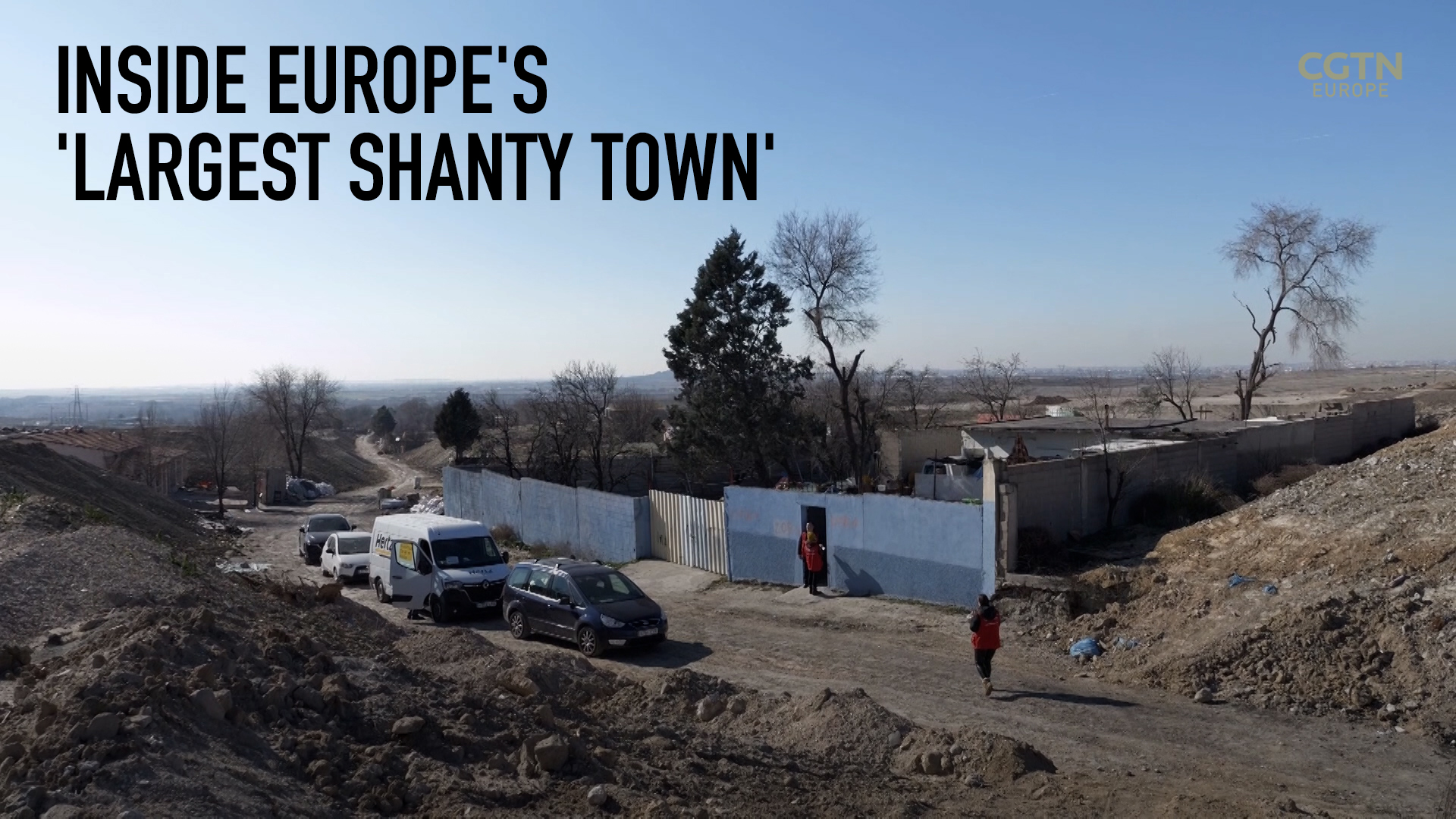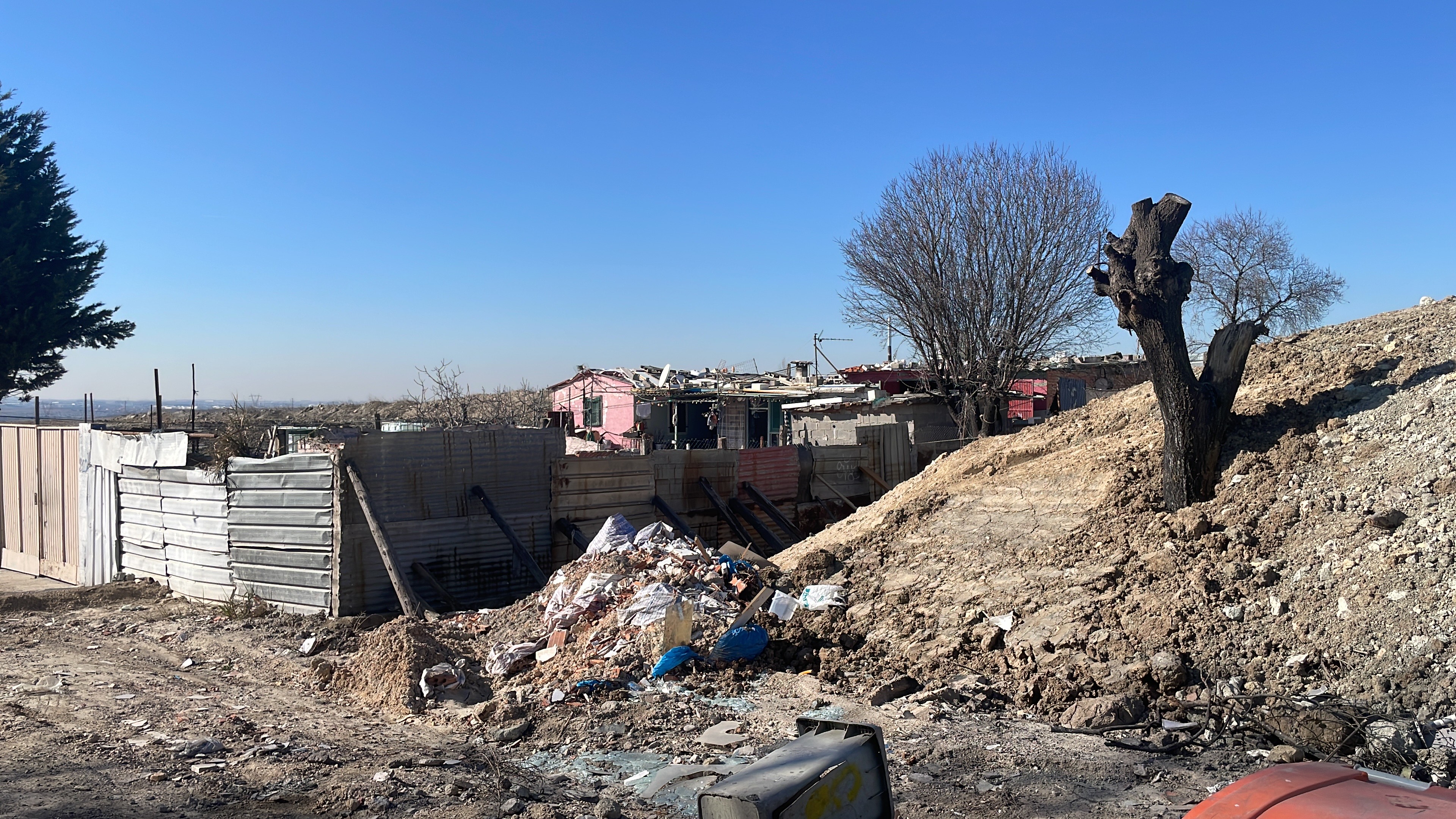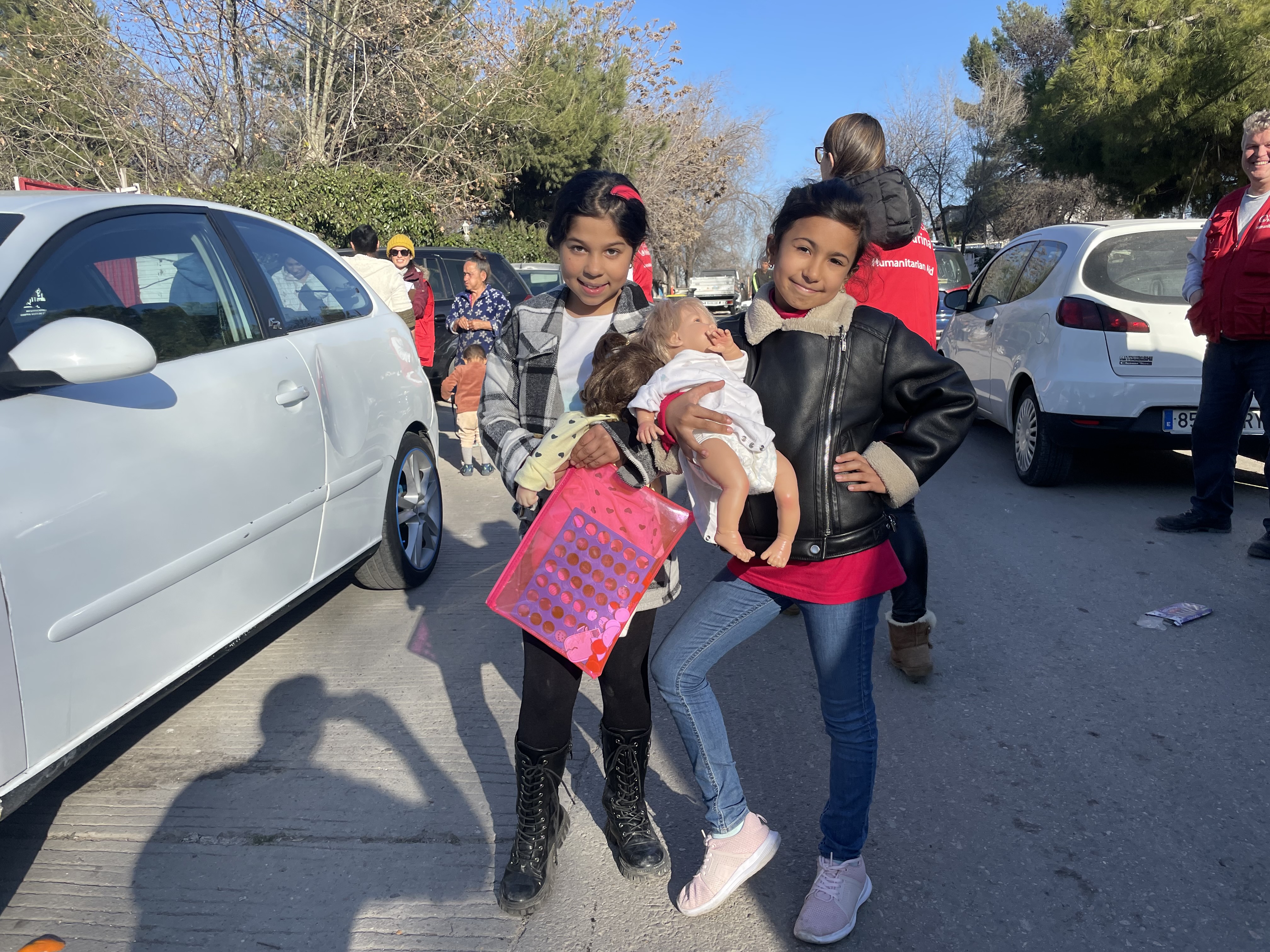03:05

Locals in a neighborhood dubbed 'Europe's largest shanty town' on the outskirts of Madrid have revealed how they live in poverty without electricity or running water.
And residents of Cañada Real also fear their homes could be demolished by the Spanish government.
"I'm pregnant and the nights are the worst, my walls are mouldy, we don't have a wood burner or heater because we can't afford it. I'm suffering," Erica told CGTN.
She's just one of thousands of residents in Cañada Real living day-to-day in makeshift housing with no electricity.
READ MORE
Shaolin shines at Madrid's Chinese New Year
Belgrade to Budapest in 3.5 hours by rail
The Secret Betrayal: China's WWII sailors
The walls in Erica's home, where she lives with her husband, are made from plastic and aluminium and offer little protection against the freezing cold that descends on District 6 by night. The entire area has had its electricity and water shut off for over two years.
"Honestly, if the government could just turn on the electricity that would make us happy, we're human too out here," Erica added.
Over 7,000 people live in La Cañada Real, and more than 2,500 of those are children or minors.
Residents complain that they are discriminated against for being part of the traveling community with the government having cut electricity for everybody because of marihuana grow houses.

Debris from a demolished home in Cañada Real. CGTN
Debris from a demolished home in Cañada Real. CGTN
The government says the area is being used by narco-traffickers to cultivate marihuana plantations and cut the electricity and water supplies.
The cold is one hardship that people here have to endure, but they fear something much worse. A demolition has been taking place as the building is believed to have been used as a marihuana grow house.
"We live in fear. My family could end up in the streets," said one person.
Less than 100 meters from the demolition, Antonio Pardo Romero is standing outside his front door where he and his wife live with their five children.
"We're really afraid because they can just come and knock our house down and that would leave us living in the street," he said.
Inside his daughter plays with toys donated by a local NGO next to the warmth of a wood-burning stove. The authorities consider many handmade homes like theirs to be illegal and can demolish them, sometimes without warning.
"We just want a decent home to live in," said Antonio.

Cañada Real children pose with toys delivered by the Madrina Foundation charity./ CGTN
Cañada Real children pose with toys delivered by the Madrina Foundation charity./ CGTN
The government's solution is to rehouse people from the area, but it's far from simple. Families need to have their tax status and local residency in order and need to prove they were tax-paying residents in Cañada Real from before 2011.
If they are granted a home, they have no choice in its location, size, or current state. For people like Mr Pardo Romero, who moved to his current residence in 2017, it's an anxious wait.
"We just want a decent home to live in," he said.
For now he and his family get by with candles, car batteries, and small lights charged during the day with solar packs, just as many of his neighbors do.
"The government needs to provide dignified homes," he added. The residents here have relied heavily on charitable organizations like the Madrina Foundation.
Conrado Gimenez is the founder and a familiar face in Sector 6, delivering food and clothes for over two years. He says the government needs to do more.
"They have to rehouse all the families here and give them a dignified place to live with access to decent services," he said.
"The population here is both very young and very old, we're talking about vulnerable people. Many children don't even go to school. So for the good of the children and the older people, the solution is to provide them with a home."
For residents like Erica, who has already lost one child and has another on the way, the hope is that this solution will come soon.
"I just want my child to grow up in a good place, without it being so cold and damp," she said.
Subscribe to Storyboard: A weekly newsletter bringing you the best of CGTN every Friday